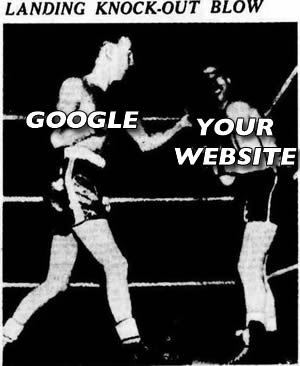
As we noted in the last blog post, the so-called Phantom ranking algorithm update that Google first started integrating in late April isn’t over yet. Sites are still yo-yo’ing in the search results right now. These updates take a while to fully shake out as it spreads across to all data centers and Google makes adjustments to any unintended issues that crop up.
So what can you do to recover your SEO? You have to understand what seems to be the triggers for being penalized by this alteration in the algorithm. We observed already that it’s officially been announced as a new way of interpreting site quality, a bedrock of Google’s advanced system for deciding who gets the better slots.
Where to Take Action
It’s clear that spamming of any kind, as well as the perceived worth of your content is once again the targeted areas for either raising your site up or moving it down. With that in mind here’s some specifics that you should be looking at:
1. Cross Linking – If you have multiple websites and you link back and forth, that’s not necessarily a problem. What is a problem, however, is if your links have the exact same link text every time. Just as Google wanted varied link text across your other backlinks, they want the same within your own network of websites as well. Take a look at those and change them up. Now.
2. Content Length – Do you have a lot of pages that have just a couple of paragraphs? This is a sign to the search engines that you’re just putting up pages to make your site look more substantial than it is – not a good practice. Your page length needs to be more than a quick drive-by – it doesn’t serve the needs and interests of your visitors and that’s now a vital SEO signal. Make those pages substantial by adding real, usable, helpful content. If you can’t, don’t make a page in the first place.
3. Content Context – Another red flag for Google in the Phantom Update are pages that are purely filled with video and/or photos. It is true that those kinds of content can be truly helpful and engaging, BUT readers need context to understand what the page is about before they dive in. Even if it seems to be self-evident, think about the searcher who lands on the website on this page. They haven’t seen anything else on the site, so they need to be brought up to speed. Adding some, not necessarily a lot, of introductory text also gives the search engines context, so they understand fully what they need to know, too.
4. Links from Article Directories & Other Resources – Previous Google updates diminished the value of links from places like EZine Articles, but places like Hub Pages didn’t seem to suffer as much. Not anymore. There are reports of ‘How To’ content being penalized, but this seems to be more a matter of the content these pieces are surrounded by, or their content quality, than anything else.
After all ‘How To’ is the definition of helpful, useful content that Google is always emphasizing, so it’s either a matter of the neighborhood the content is in, or this is a temporary issue that hurts the good, as well as the bad, which often happens in the early days of these algorithm shake-ups. If you can truly say that your content is ‘Quality’, then you may just have to ride it out and wait for recognition that will come.
What Next In Your SEO?
Those are the primary things you need to be examining in your SEO – and as soon as possible. These upheavals are never pretty, but there’s not a lot you can do if you are playing by the rules, unfortunately.
Keep following the Google guidelines, see if you may have problems that have gone unnoticed and wait for the cream to rise again.
